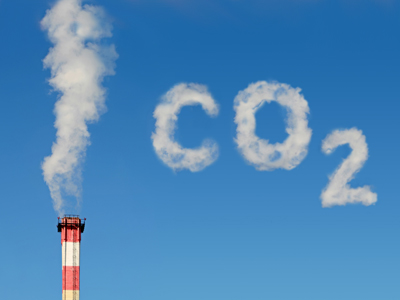The building material limestone is one of the subjects looked at in high school Chemistry. In this, the first of two quizzes on the topic, we look at some of the chemical reactions which involve limestone..
Limestone is a sedimentary rock that is found in many parts of Britain. It is quarried and used widely as a building material, but it can also be used as it is, or processed, to make other useful materials. Some of these uses are obvious like cement, glass and steel, however, without limestone, many other substances that we take for granted would be either unknown or of much poorer quality. It is probably impossible to go through a single day of your life without coming across, or using, a product that has not involved limestone in its manufacture at some point.
Limestone used directly as a building material has its strengths and weaknesses. Whilst it is a hard rock, it is easier to cut and shape than igneous rocks but since the main mineral in limestone is calcium carbonate, it is readily corroded by acids. In cities, where there is a high concentration of fumes from motor vehicles and other industry, the acid rain formed from these fumes damages buildings made from limestone, 'eating' away at the surface.
One of limestone's main uses in the building industry is to convert it into cement which can then be used for making mortar to hold bricks and stones together, and concrete to make walls and floors. To make cement, limestone is roasted at high temperatures with clay. Making materials from cement on its own is possible but you end up with a solid that is hard, expensive, but very brittle, so it is normally mixed with an aggregate to make either mortar (the aggregate is sand) or concrete (the aggregate is a mixture of sand and gravel). Adding steel bars or mesh to concrete produces reinforced concrete, a very strong and useful building material that can last for 100 years or more.
The environmental cost of using limestone is something that you need to be able to debate at high school. The processing inevitably produces carbon dioxide and there is also the quarrying, so learn as many pros and cons as you can when preparing for your exam.
You are also expected to know some of the chemical reactions involving limestone including the conversion of limestone into quicklime and slaked lime, and the associated equations. Heating it strongly causes the calcium carbonate of the limestone to undergo thermal decomposition, releasing carbon dioxide and leaving calcium oxide behind. Adding water to the calcium oxide forms calcium hydroxide. You have probably done these reactions in the laboratory. Limestone treated in this way can be used in place of cement and is regarded as being a more environmentally friendly material as it is produced at lower temperatures and also absorbs some carbon dioxide from the air as part of the setting process. It requires more care and attention when mixing and using lime mortar and 'limecrete', but when it is used properly, it is a tough building material. Quicklime and slaked lime form the basis of concrete used by the ancient Roman civilization, some of which has survived for 2000 years or more!








